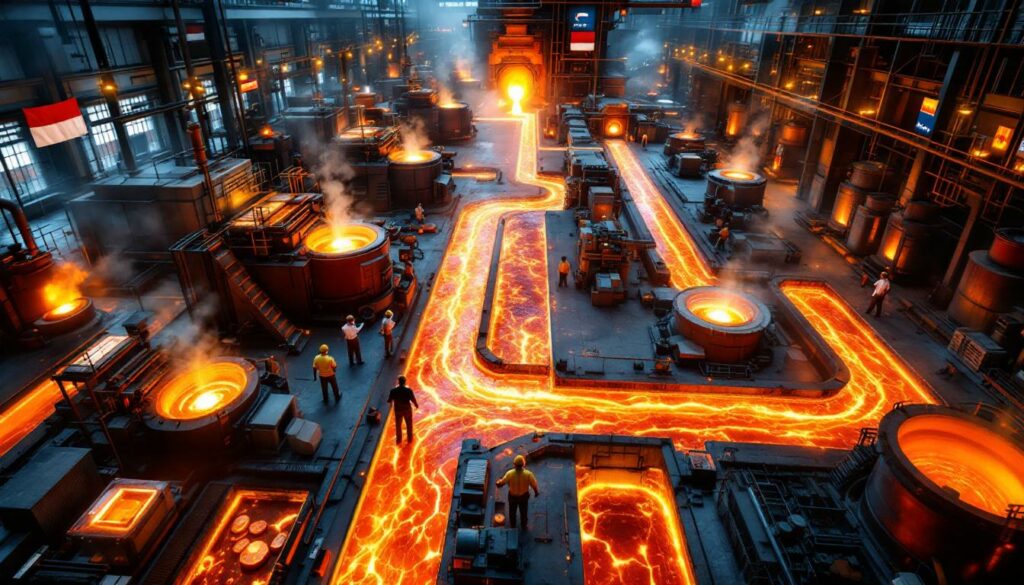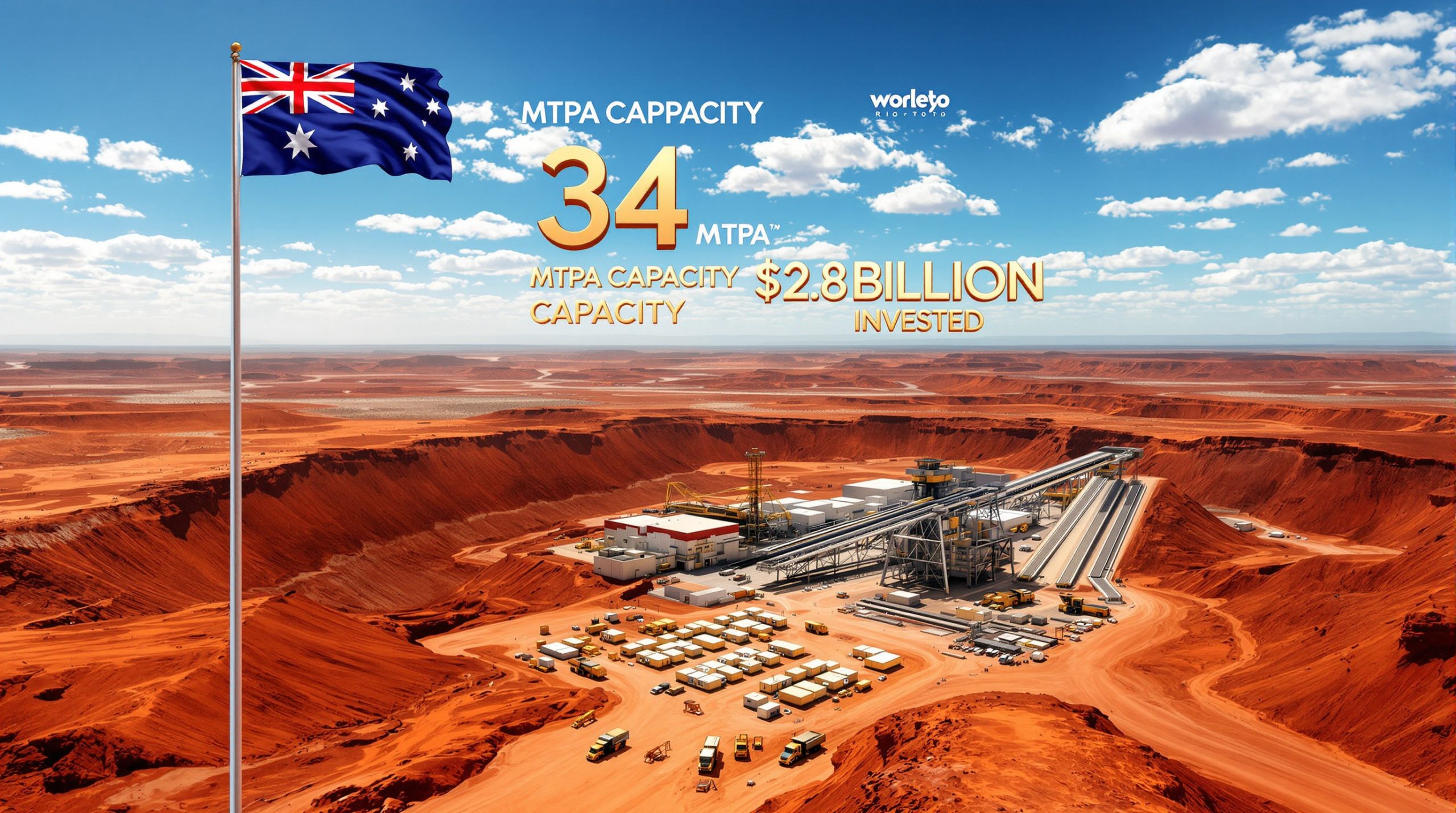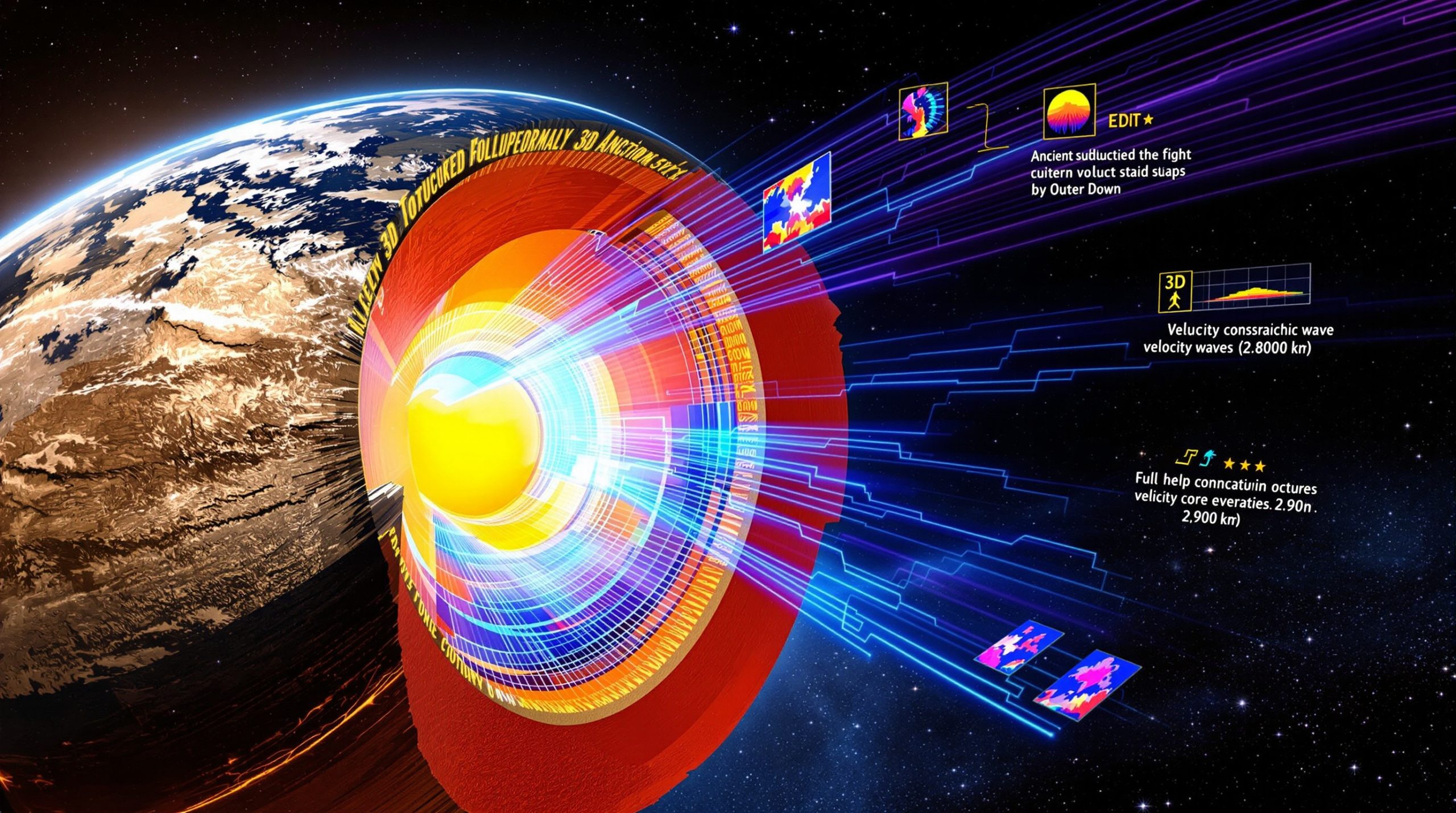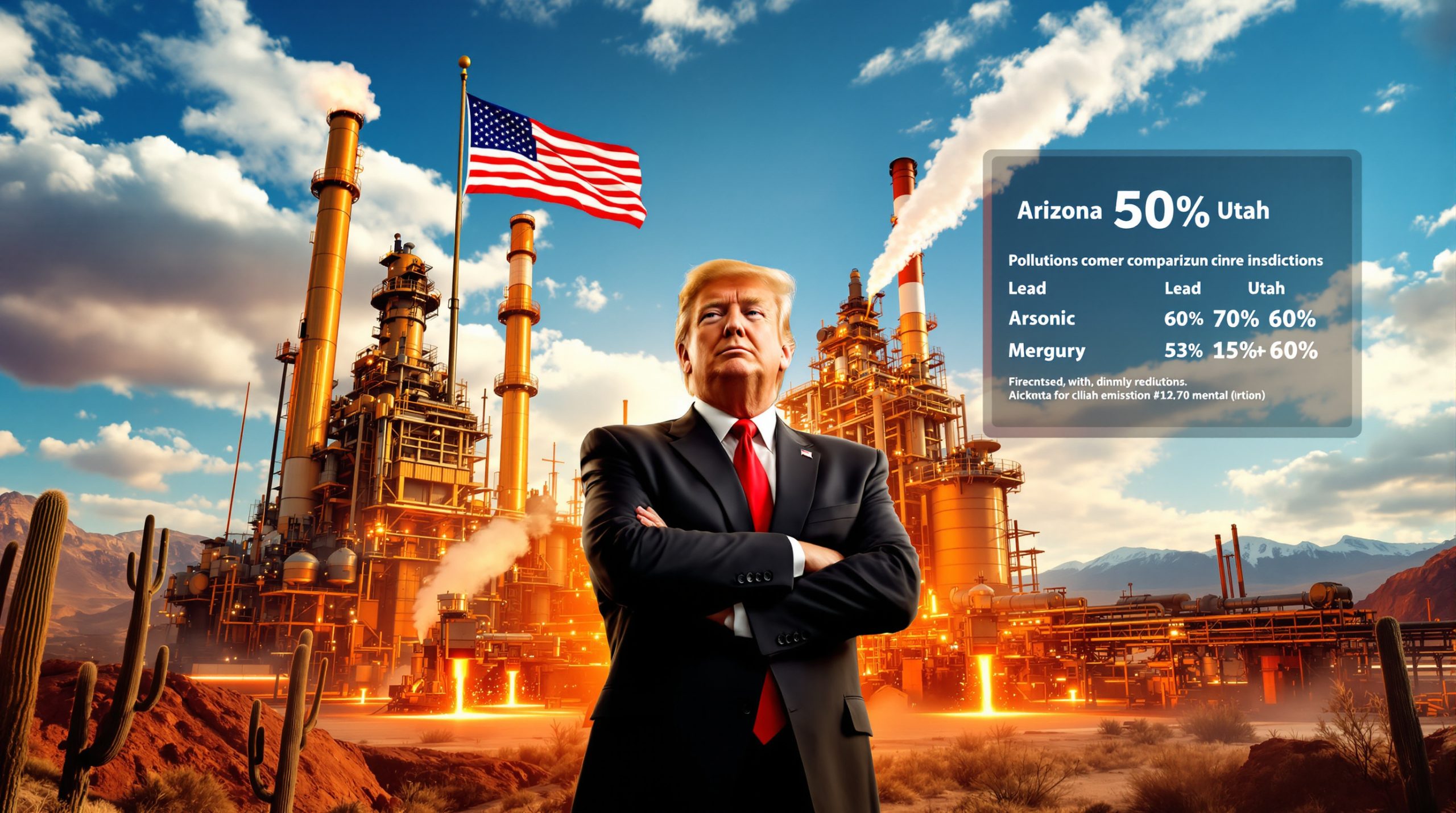What's Happening in the Copper Concentrate Market in 2025?
The Era of Negative Processing Fees
The copper concentrate market has entered unprecedented territory in 2025, with processing fees plunging into negative figures since early in the year. According to SMM's semi-annual market review of copper concentrates, smelter procurement prices have fallen dramatically from single-digit lows to stabilize around -$40 per ton since late April 2025. Even more concerning, trader procurement prices have experienced a steeper decline, plummeting from -$80 per ton to approximately -$140 per ton during the first half of 2025.
These negative processing fees represent a fundamental shift in market dynamics, effectively meaning that smelters are paying miners for concentrates rather than charging for processing services—a clear indication of the severe supply shortage plaguing the market. This phenomenon has created a two-tier market where smelters have seen relative price stabilization while traders continue to face deteriorating conditions.
"The copper concentrate market has reached a critical inflection point where traditional pricing mechanisms have inverted, creating unprecedented challenges for market participants." – SMM Analysis
Market Structure Creating Price Pressure
Several structural factors are driving this price pressure. The market is experiencing asymmetric supply-demand dynamics, with concentrate supply unable to keep pace with robust smelting capacity. Mining companies have strategically responded by allocating more material to spot tenders, capitalizing on the competitive bidding environment to secure better terms.
Adding fuel to this already competitive landscape are new, aggressive market entrants who have intensified the battle for available concentrate. This has directly contributed to the widening gap between smelter and trader procurement prices, with traders facing additional costs and risks when purchasing concentrates without having direct smelting capacity.
The price differential reflects not only these added costs but also highlights the increasingly desperate position of traders who lack vertical integration advantages. Without the ability to process concentrate themselves, traders must secure ever-higher premiums to justify their position in the supply chain, further distorting market pricing mechanisms.
How Has Global Copper Concentrate Supply Evolved in 2025?
Indonesian Policy Changes
A significant development affecting the global copper concentrate market in 2025 has been Indonesia's policy shift regarding exports. The Indonesian government issued six-month export permits to Freeport Indonesia, allowing the export of 1.27 million ore tons of copper concentrates. This policy change has provided some relief to the tight global supply situation.
However, this relaxation of export restrictions comes with conditions. The government has implemented a 7.5% export royalty on cargo value, which affects the economics of these exports. Despite this royalty burden, the permits have enabled immediate shipments from Freeport's Indonesian port facilities, helping to ease global copper supply forecast.
Indonesia's decision to temporarily relax export restrictions appears motivated by the high copper price environment, which provided economic incentives to maximize national revenue from mineral resources. This policy shift underscores how market conditions can influence regulatory approaches, particularly in resource-rich nations balancing domestic processing ambitions with export revenue opportunities.
Production Disruptions and Developments
The first half of 2025 has witnessed several significant production disruptions across major copper mining operations globally:
-
KAZ Minerals' East Zhezkazgan mine (Kazakhstan): A serious accident in late March 2025 has resulted in ongoing production losses estimated at approximately 600 metric tons of copper content daily. The extended nature of this disruption has had cumulative impacts on global supply.
-
KGHM's Sierra Gorda operation (Chile): Following a worker fatality in early-mid April, operations faced temporary challenges. However, the impact was minimized as the incident coincided with previously scheduled maintenance activities.
-
Teck Resources' Carmen de Andacollo mine (Chile): A mechanical failure in early June necessitated repairs to the SAG mill, resulting in a one-month production interruption. This highlights the vulnerability of operations to single-point mechanical failures.
-
Hudbay Minerals' Snow Lake mine (Canada): Operations were suspended due to Canadian wildfires, with the duration remaining undetermined. Climate-related disruptions represent an emerging risk factor for mining operations in certain regions.
-
Kamoa-Kakula (DRC): Perhaps most significantly, production guidance for 2025 was reduced by 28%, revised downward to 370,000-420,000 metric tons from the initial projection of 520,000-580,000 metric tons.
These disruptions collectively represent substantial supply losses, though their impact has been partially offset by other market developments.
Expansion Projects Progress
Despite the challenges facing the industry, several expansion projects have continued to progress:
Tongling Nonferrous Metals Group's Mirador Phase II expansion in Ecuador initiated heavy-load commissioning in July 2025, representing a significant addition to global concentrate supply. This project's advancement demonstrates the continued investment in copper & uranium investment driven by favorable long-term market fundamentals and high copper prices.
The prevailing high copper price environment (≥$9,000/mt) has had a dual effect on production: reducing operational conflicts at mining sites and improving the economic viability of marginal operations. Mines that might have struggled to remain profitable under lower price conditions have been able to maintain or increase production, providing some counterbalance to the supply disruptions elsewhere.
The table below summarizes the major supply disruptions in H1 2025:
| Operation | Location | Issue | Impact | Duration |
|---|---|---|---|---|
| East Zhezkazgan | Kazakhstan | Mining accident | 600 mt/day loss | Ongoing |
| Sierra Gorda | Chile | Worker fatality | Limited | Minimal |
| Carmen de Andacollo | Chile | Mechanical failure | SAG mill shutdown | ~1 month |
| Snow Lake | Canada | Forest wildfires | Full suspension | Undetermined |
| Kamoa-Kakula | DRC | Production guidance reduction | 28% decrease | Annual impact |
What's Happening with Global Smelter Operations?
Diverging Operational Trends
A notable trend in the semi-annual market review of copper concentrates is the growing operational rate gap between Chinese and overseas smelters. Chinese facilities have largely maintained higher utilization rates, while international operations have faced increased pressure to reduce production.
This divergence reflects fundamental differences in cost structures, government support mechanisms, and market access. Chinese smelters benefit from greater access to spot concentrate markets and often receive various forms of state support that can offset profitability challenges during difficult market periods.
Expectations for Chinese production cuts have weakened throughout H1 2025, while the outlook for overseas production reductions has strengthened. This operational divergence has further complicated the market imbalance, as it affects how concentrated demand is distributed geographically.
International Smelter Developments
Several significant developments have affected international smelter operations:
-
Glencore's Pasar smelter (Philippines): Operations have been halted until July 2025, with ongoing negotiations with the Villar family for a potential sale. This represents both a temporary supply reduction and potential longer-term ownership change.
-
Glencore's Altonorte smelter (Chile): The facility entered a one-month maintenance period for furnace brick replacement, necessitating a minimum two-week complete shutdown of the smelting process. The Glencore smelter shutdown impact has removed significant processing capacity from the market temporarily.
-
Sinomine Resource Group's Tsumeb smelter (Namibia): Operations were temporarily suspended in early June due to concentrate supply shortages, highlighting how upstream disruptions can cascade through the value chain.
-
JX Advanced Metals Corporation: The company has implemented a strategic shift toward higher-margin recycled materials and is considering production cuts due to deteriorating ore purchasing conditions. As noted in their official statement: "JX Advanced Metals is promoting high-margin recycled materials due to deteriorating ore purchasing conditions."
-
Adani copper smelter (India): After multiple delays, operations resumed on June 16, 2025, bringing 500,000 metric tons of annual capacity back online. This represents a significant addition to global smelting capacity.
Chinese Smelter Operations
Chinese smelters have shown greater resilience in maintaining operations:
-
Tongling Nonferrous Metals Group's Jinxin smelter: The facility commenced furnace operations in late May 2025, adding new capacity to the market despite the challenging conditions.
-
Shenghai Chemical smelter: Production resumed in mid-July 2025 after a half-month furnace preheating period, further bolstering Chinese smelting capacity.
The operational decisions of Chinese smelters appear less affected by negative processing fees compared to their international counterparts, potentially due to different cost structures, financing arrangements, and strategic priorities.
| Smelter | Location | Development | Capacity Impact | Timeline |
|---|---|---|---|---|
| Pasar | Philippines | Production halt | Complete | Until July 2025 |
| Altonorte | Chile | Maintenance | Complete | ~1 month |
| Jinxin | China | Commenced operations | Capacity addition | Late May 2025 |
| Tsumeb | Namibia | Temporary suspension | Complete | Undetermined |
| Adani | India | Production resumption | 500,000 mt annual | June 16, 2025 |
| Shenghai Chemical | China | Production resumption | Capacity addition | Mid-July 2025 |
What's Driving the Market Imbalance?
Supply-Side Factors
Several key supply-side factors are contributing to the current market dynamics in the semi-annual market review of copper concentrates:
High copper prices have alleviated production conflicts at mining operations, providing economic incentives to maximize output. With copper price predictions maintaining levels above $9,000 per metric ton, even higher-cost producers have been able to operate profitably, keeping more concentrate flowing to the market than might otherwise be expected.
The Indonesian export policy relaxation has provided a significant boost to available concentrate, with the 1.27 million ore tons of permitted exports helping to offset supply shortfalls from disrupted operations elsewhere. This policy shift was directly influenced by the attractive price environment, demonstrating how market conditions can drive regulatory changes.
Despite the headlines generated by various production disruptions, their overall impact has been relatively limited compared to the total market size. Even significant disruptions like the KAZ Minerals accident (600 mt/day loss) and the Kamoa-Kakula guidance reduction (28% decrease) have been partially counterbalanced by other developments.
Expansion projects have continued their development trajectory, with Mirador Phase II's commissioning in July 2025 representing just one example of ongoing capacity growth. The project pipeline remains robust, reflecting long-term confidence in copper demand fundamentals despite near-term market imbalances.
Demand-Side Pressures
On the demand side, several factors are exacerbating market tightness:
The operational divergence between Chinese and international smelters has concentrated demand patterns, with Chinese operations maintaining higher utilization rates while some international facilities reduce production. This geographic demand concentration affects logistics and pricing dynamics across regions.
Profitability concerns are driving strategic production decisions, particularly among international smelters. JX Advanced Metals' shift toward recycled materials exemplifies how smelters are adapting to challenging concentrate market conditions by diversifying raw material sources.
Despite the difficult market environment, new smelting capacity continues to come online. Adani's resumption in India (500,000 mt annual capacity) along with Jinxin and Shenghai Chemical in China represent significant additions to processing capacity, further straining the already tight concentrate market.
These demand pressures, combined with the supply-side factors, create a complex market environment where negative processing fees have become the new reality as smelters compete aggressively for available material.
What Are the Key Market Indicators to Watch?
Processing Fee Trends
The most direct indicator of market conditions is the evolution of processing fees. The stabilization of smelter procurement prices around -$40 per ton since late April 2025 suggests a potential floor may have been established in that segment of the market.
However, the continued decline in trader procurement prices, which have fallen to approximately -$140 per ton, indicates ongoing pressure in the secondary market. This widens the gap between different market segments to over $100 per ton, creating arbitrage opportunities but also reflecting fundamental differences in bargaining power.
Market participants should closely monitor both the absolute level of processing fees and the spread between different market segments. Any convergence between smelter and trader prices could signal improving market balance, while a continued or widening divergence would suggest persistent structural issues.
"The unprecedented gap between smelter and trader procurement prices highlights the fragmentation of the concentrate market and the increasingly desperate position of non-integrated players." – SMM Analysis
Supply Risk Assessment
Several supply risk factors warrant ongoing monitoring:
The frequency and duration of production disruptions remain critical variables. While some disruptions have clear timelines for resolution (e.g., Carmen de Andacollo's one-month SAG mill repair), others have more uncertain durations (Snow Lake's wildfire-related suspension) or represent permanent reductions for the year (Kamoa-Kakula's guidance cut).
Progress on expansion projects also requires close attention. Mirador Phase II's successful commissioning in July 2025 represents a positive development, but any delays or issues with other projects in the pipeline could exacerbate supply tightness.
Export policy developments, particularly in key producing countries like Indonesia, can quickly shift market dynamics. The current six-month export permits create a definite timeline that market participants must factor into forward planning.
Smelter Operational Decisions
The strategic responses of smelters to challenging market conditions provide important signals about market direction:
Production cut announcements from major players, such as JX Advanced Metals' consideration of output reductions, may indicate a market approaching an inflection point. If multiple smelters follow suit, it could eventually rebalance the market and stabilize processing fees.
Strategic shifts toward alternative raw materials, particularly recycled copper, reflect adaptation to concentrate shortages. The increasing prominence of recycling in company strategies (as with JX) may signal a longer-term structural shift in raw material sourcing.
Capacity utilization rates across different regions continue to diverge, with Chinese operations maintaining higher rates than international counterparts. Any narrowing of this gap would suggest a more balanced global market environment.
How Might the Market Evolve in H2 2025?
Potential Supply Developments
Looking ahead to the second half of 2025, several potential supply developments could influence market dynamics:
The impact of Indonesian export permits will be significant, potentially covering over 1 million metric tons of semi-annual demand. However, these permits are time-limited, creating uncertainty about supply conditions in early 2026 if renewals are not granted.
Recovery timelines for disrupted operations vary considerably. Carmen de Andacollo is expected to resume production after its one-month SAG mill repair, while the duration of Snow Lake's wildfire-related suspension remains uncertain. The ongoing production loss at KAZ Minerals' East Zhezkazgan mine (600 mt/day) represents a significant continued supply risk.
The progression of expansion projects into production phases will provide incremental supply relief. Mirador Phase II's commissioning represents a positive development, though the full production ramp-up timeline will determine its near-term market impact. Furthermore, several US copper project insights suggest additional production capacity coming online in the medium term.
Smelter Response Strategies
Smelters are likely to implement various strategic responses to persistent market challenges:
Production adjustment decisions will be increasingly driven by profitability considerations. If negative processing fees persist at current levels, more international smelters may follow JX Advanced Metals in considering output reductions.
The focus on recycled materials as an alternative raw material source is likely to intensify, particularly among smelters with the technical capability to process more complex secondary materials. This shift could provide partial relief from concentrate market tightness.
Regional operational rate divergence may continue or potentially widen further, with Chinese smelters maintaining higher utilization rates due to different cost structures and strategic priorities. This divergence has implications for global trade flows and regional price differentials.
Price Outlook Considerations
Several factors will influence the price outlook for the second half of 2025:
The sustainability of negative processing fees at current levels is questionable, with potential for either stabilization (as seen with smelter procurement prices since April) or further deterioration (as experienced in trader markets). Any significant smelter production cuts could eventually provide relief through reduced demand.
Market rebalancing potential exists but depends on the combined effect of supply improvements (recovery from disruptions, new production) and potential demand moderation (smelter cuts, increased recycling). The timeline for any rebalancing extends beyond 2025 given current trends.
The impact of new capacity additions, including Adani (500,000 mt), Jinxin, and Shenghai Chemical, will continue to exert pressure on the concentrate market in the near term, potentially delaying any meaningful rebalancing.
FAQ: Copper Concentrate Market in 2025
What are processing fees in the copper concentrate market?
Processing fees represent the amount smelters charge to convert copper concentrate into refined copper. These fees typically include treatment charges (TC) for smelting and refining charges (RC) for converting blister copper to cathodes.
In normal market conditions, mining companies pay positive processing fees to
Want to Profit from the Next Major Mineral Discovery?
Discovery Alert's proprietary Discovery IQ model instantly identifies significant ASX mineral discoveries, transforming complex data into actionable investment insights before the broader market reacts. Explore how historic discoveries have generated substantial returns by visiting our dedicated discoveries page and begin your 30-day free trial today.




